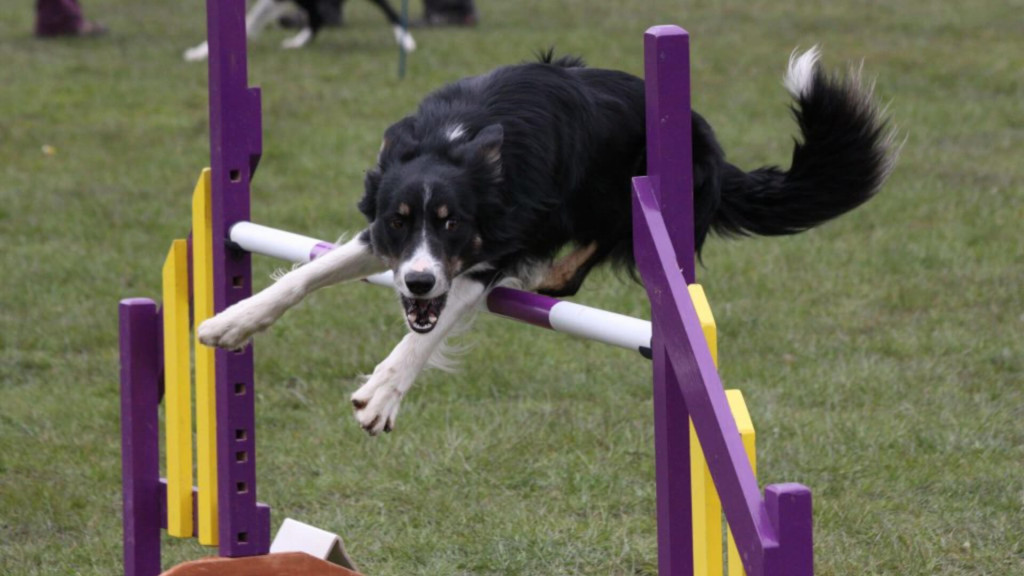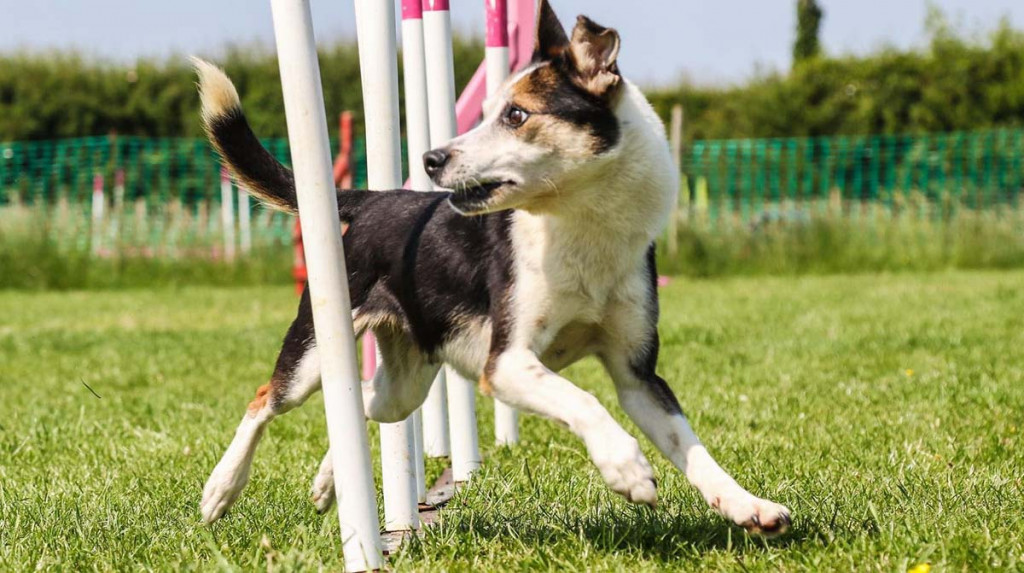The Importance of Learning Foundation Skills in Dog Agility Training - Part 2

Reading time – 5 mins
This is Part 2 of a 3-part series – an in-depth look at the importance foundation skills play when you begin your dog agility training journey.
The Basics: What Every Beginner Should Know
The Importance of Patience and Consistency
Patience and consistency form the backbone of effective agility training, which will help create a positive learning environment for your dog.
It's essential to stay patient, even when mistakes happen, to ensure these errors help your dog learn without hurting its confidence or excitement.
Being consistent in rewarding the right actions helps your dog understand what you want, which makes training clearer and more successful.
Types of Discipline
In agility training, discipline feedback can be both positive and negative. Negative discipline might mean not offering a reward, while positive discipline could involve unpleasant experiences such as reprimands or more severe punishments.
Positive discipline should be avoided in agility training to maintain trust between you and your dog. Be careful withholding rewards, too – making too many mistakes can cause a dog to lose confidence and motivation.
Breaking skills into small steps helps dogs learn better and keeps your commands consistent. By setting a pace that suits your dog's learning style you will enhance their ability to absorb and retain new skills.
Key Foundation Exercises for Beginners
Target Training
Target training is a foundation exercise that teaches dogs to touch or move towards a specific object. This skill is invaluable for directing their movement and enhancing focus during agility courses. Here’s an example:
Training Your Dog to Nose-Target
Your goal is to get your dog to nose-touch a flat target, like a Pringles can lid, on verbal command. Use small pieces of their favourite food as rewards for numerous repetitions.
Step 1: Sit on the floor with your dog for easy target access. Grab their attention by showing the reward. Place a treat on the lid and mark the exact moment they touch it with their nose with a "yes," letting them take it immediately. Repeat 5-6 times swiftly.
Step 2: Continue the hand-to-lid motion but without a treat. Pretend to place one on the lid. When your dog touches the lid searching for the treat, mark the action and reward them. Keep a quick pace.
Step 3: Gradually reduce how close your empty hand gets to the lid. Your dog will start to touch the lid in anticipation of the reward. Reduce the distance of your hand incrementally, encouraging earlier touches until they act without any hand motion.
Step 4: Introduce a verbal cue, like "target," right before your dog is about to touch the lid. Consistent success here will link the verbal cue to the action, ensuring they still get their reward.
Keep sessions short (1-2 minutes) and progress slowly through the levels. Spending several sessions in the early stages is OK, ensuring many successful repetitions. This method builds value for the behaviour, making it more likely to be repeated.
Basic Obedience and Responsiveness to Commands
Establishing basic obedience, including commands like “sit,” “stand,” and “down”, is a must. These commands ensure safety and improve your dog's responsiveness, making training more effective.
Dogs are good at picking up on visual signs, so consistency helps them understand and react better. Teaching them words can be a bit harder, but they can learn various commands with the right approach.
It's important to be consistent here, too. In agility training, we aim for dogs to follow spoken commands more than visual ones or where the handler is positioned. This means dogs should know what to do just from hearing the command.
First, dogs learn a new action, and then we add a spoken command. At the start, visual signs might guide them, but the aim is to get to a point where saying the word is enough.
We teach this through a set routine: say the command, show the visual cue, praise them when they get it right, and then reward them immediately.
By doing things in this order, dogs learn to expect what comes next and start actions quickly. Introducing a short wait between saying the command and showing the sign helps check if they've really learned the word.
Dogs that are rewarded for their actions are more likely to follow commands, which helps with obedience and teamwork.
Introducing Agility Equipment at a Foundational Level
Early exposure to agility equipment, in a controlled and gradual manner, acclimates your dog to the various obstacles they will encounter. This foundational step reduces fear and builds confidence.
We introduce equipment slowly to avoid scaring your dog. Rushing can overwhelm them, possibly making them scared or defensive and damaging their trust in you.
One way to do this is by breaking down more complex equipment, like the dog walk, into smaller parts. Starting with the lower heights reduces the risk of injury and makes sure every experience is positive. Celebrate small wins and gradually move on to more challenging tasks.
For example, you can use simple items, like a drainpipe and some plant pots, to create a low jump. Guide your dog over it with treats, rewarding them as they jump. This method not only makes training focused but also fun.
Training sessions should be short, around 1 to 2 minutes, but done often to help build a strong, positive connection with the equipment. This method is vital for a successful start in agility training and will make it enjoyable for you both.

Common Challenges and How to Overcome Them
Frustration and Setbacks – Keeping Motivation High
Training your dog isn't always straightforward. Many factors can influence your dog's learning process – these include their understanding of your commands, your training location, the presence of distractions, your dog’s motivation levels and the strength of your bond.
Other essential aspects are their ability to apply learned skills in various situations and their physical and mental health.
With all these elements affecting their learning, it's truly remarkable that dogs can learn at all!
When your dog is starting out, it's a good idea to control the environment to help it succeed. As it improves, you can slowly make things more challenging to strengthen what it's learned, always paying attention to the factors mentioned.
If you encounter a setback, try to avoid letting your dog fail too much. If they don't get it right twice in a row, return to something they were good at before.
This will boost their confidence and make them more willing to work with you. Remember, taking a step back is OK if it means they'll do better later.
Adjusting Training Approaches for Different Breeds and Personalities
Training dogs means considering their breed and personality. Different breeds have been bred for specific jobs, and this affects how they learn and behave.
For example, Border Collies are good at working from a distance, thanks to their herding background. Terriers, bred for hunting rodents, are precise and determined.
Thinking about the jobs that breeds were initially bred for gives clues to their natural abilities, but dogs within the same breed can be very different. Some might be exactly like their breed's typical traits, while others might be more gentle or shy.
Watch how your dog acts around other dogs and people. Notice what rewards they like and what they enjoy doing. Use this information to make training fit their preferences and strengths.
For instance, a lively Terrier might do well with fun, energetic training that uses their natural hunting instincts. However, a shy dog might need a gentle approach that helps build confidence and trust.
Good training is about adjusting your methods to fit each dog's breed and personality. This way, training becomes a positive experience that brings out the best in each dog.
Reinforcement and Positive Training Methods
In dog agility, rewards and positive methods are vital in teaching dogs the right moves and building a good team with their handler. Treats, praise or playtime for good actions encourages dogs to do those actions again.
Using these positive methods helps keep training fun and supportive, making dogs keen to take part. It also improves communication between you and your dog, which will improve how you work together.
By consistently using rewards to train, your dog will become more confident, eager and accurate in their agility work, which not only helps in competitions but also makes training more enjoyable.
Sian's Top Tip
To prepare your dog for agility training at any age, you can introduce them to walking on different surfaces. Things like concrete, tarmac, grass, fake grass, carpets and laminate flooring are a must for any dog, even if they’re not doing agility training.
But the variety can be increased further. Invite them to interact or even walk on novel textures like sand and granulated rubber floors (as found in play parks), which are similar to the surface on agility contact equipment.
Other suggestions would be plastic bags, clothing, gravel and glass flooring. Your dog’s paws are as sensitive as our hands, and they take in lots of information from what they touch. When they come across a novel surface, this can be enough to over-stimulate them or worry them with a fear of the unknown.
You mustn't force your dog to walk on these surfaces; instead, invite them to. If they show avoidance the first time, reintroduce once a little time has lapsed. Eventually, your dog will walk over the new surface, adding more positive experiences to their memory, which will help them in their future learning endeavours.
In Part 3, the final instalment of this series, we'll discuss incorporating foundation skills into everyday training and the importance of variety and play.

